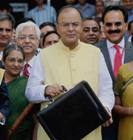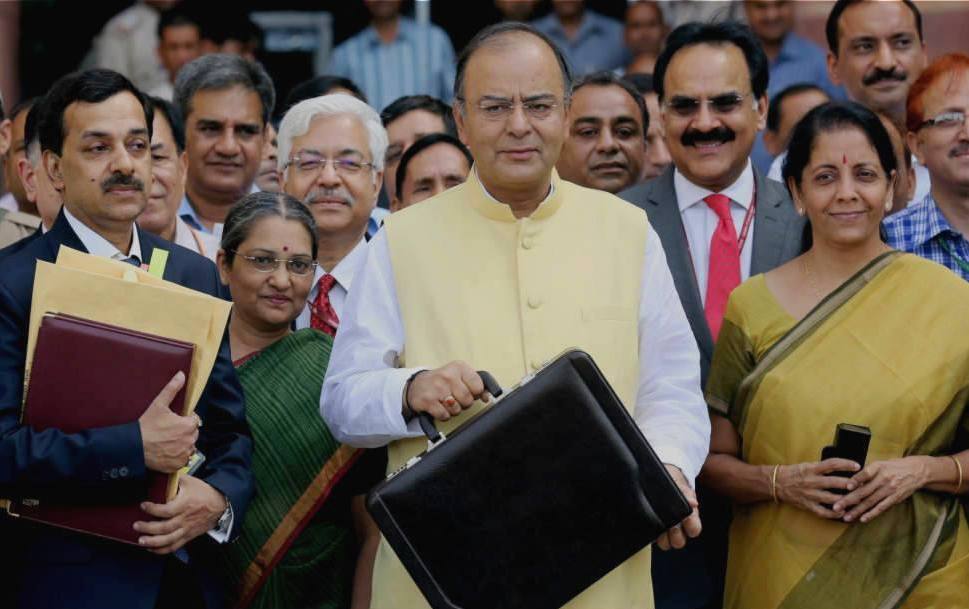
Union Finance Minister Arun Jaitley presented Budget 2015-16 on February 28 in Parliament. It is being touted as a major step to boost the economy, but critics feel it misses out in chalking out the real action plan and any supportive measures for the textile industry. The focus is clearly on the corporate sector which was doled out 30 percent reduction in corporate tax over the next four years. However, there is nothing to cheer the apparel and textile industry per se.
Misses industry expectations

Expressing disappointment over the reduction in TUFS allocation, Confederation of Indian Textile Industry (CITI) chairman Prem Malik said, “Payments under the scheme were pending for the last three quarters and the provision had to be doubled to disburse the pending amount. Reduction in allocation for the scheme would not encourage investment in the sector. The hike in service tax would also have an adverse impact on the textile industry.”
Experts feel Budget 2015 is disappointing for the textiles sector, because their recommendations have gone unheard. The industry had high expectations from the government’s growth oriented agenda. Being the most labour-intensive industry in the country employing over 35 million rural workers directly and contributing over 17 percent to the country’s industrial production, the sector was expecting some encouragement for improving production efficiency.
As DK Nair, Secretary General, Confederation of Indian Textile Industry says, “In view of the social and economic importance of this sector, the government has included textiles industry as an important component in the ‘Make-in-India’ program. However, with little help from the Budget, the industry will find it impossible to play its legitimate role in the country’s economic development since there is no specific mention of the textiles sector in the Budget.”
“The textiles industry has been making serious efforts to diversify into manmade fibre-based products to rectify the mismatch between global demand and domestic production in terms of fibre mix. The industry had requested for a significant reduction in the duty burden on man-made fibres in order to help this process. However, the duty burden on man-made fibres has only been hiked further in the current Budget. Apart from labour intensity, export orientation is another important feature of the textiles industry. However, the Budget has not addressed any export related issues either, for this sector,” asserts Nair.
During the interim Budget presented by Jaitley on July 10, 2014, he did not mention Punjab while announcing eight textiles mega clusters at Varanasi, Bareilly, Lucknow, Surat, Kutch, Bhagalpur, Mysore and Tamil Nadu with an investment of Rs 200 crores. Malwa region's cotton farmers and traders expected him to fulfill Prime Minister Narendra Modi’s election promise in the current Budget. However, there was no such announcement. "We were expecting a textile park in Malwa region, but the finance minister has paid no heed to formulating a policy to promote textiles. It is very disheartening. This government has done nothing to provide any relief to cotton textile industry," said Punjab Cotton Factories and Ginners Association president Bhagwan Das Bansal.
A few positives for the textile sector
A positive aspect of the Budget, as far as the textiles sector is concerned, is that the optional excise duty structure has been continued. “Considering the fragmented and highly scattered nature of this sector in the country, the industry had made a specific request that this facility should be continued until the introduction of GST. Continuation of this facility under the current Budget will help the industry to prepare for completing the procedural and logistical requirements for adapting itself to the GST framework expected to be introduced from the next fiscal,” Nair adds.
T Rajkumar, Chairman, The Southern India Mills’ Association (SIMA) welcomed the Union Budget and said, “The Budget has marked a good beginning to achieve the ‘Make in India’ vision of the Prime Minister.” He thanked the government for extending the optional Cenvat route for cotton textiles and also for the announcement of implementing GST. He, however, appealed that the Centre to reconsider certain major demands of the textile industry like removal of import duty and reduction of central excise duty on man-made fibres, allocation of adequate funds for the ongoing and all the pending cases of Technology Upgradation Fund Scheme and removal of central excise duty on shuttleless looms.
“The nine months old government has taken several long term initiatives to attract investments and create a conducive environment to make India, a hub for the manufactured goods and services. Huge plans on infrastructure developments including one lakh kilometer road, five mega power projects each with 4000 MW capacity, commencing the operation of second plant in Kudankulam Nuclear power plant, development of minor ports, plug and play approval facilities, reduction of corporate tax by 30 percent over the four years, road map for implementing GST with effect from April 1, 2016 and making EPF and ESI optional are certain measures which would facilitate and give enough confidence for investors in the manufacturing and service sectors, said K Selvaraju, Secretary General, SIMA, on a positive note.












